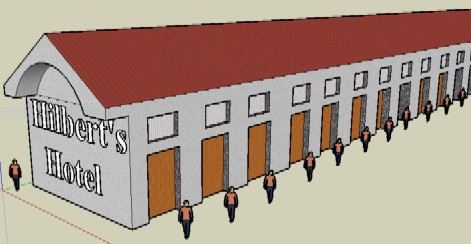In one of my classes on Tuesday, I told the students that the chain rule for derivatives is kind of like the movie Inception. At the time, I only meant that there were nested pieces and to stand as a warning for students to pay close attention as we went through it so as not to get lost. After tweeting about it, though, and reading some of the responses there, it got me thinking about how deep that rabbit hole could go.
So, in class on Wednesday I went a bit further with the idea. I guess it would be more Dan Meyer-ish if I was able to actually get a clip of the movie, but Inception isn't on DVD yet and I don't really want to get into the illegal bits if I can avoid it. Enough students had seen the movie to provide us with details and the conceit of the film was a bit wild to those who hadn't seen it, but was generally accepted.
So, I began with a brief (spoiler free, I hope?) explanation of the relevant points of the movie. The main ones are:
- Time works differently in dreams. I don't remember the exact numbers from the movie, but in one class the students said 1 minute passed in "awake world" corresponds to 10 minutes in "dream world." Another class said 5 minutes was meant to equal an hour, so we used a factor of 12 in that class. Another student suggested it was variable based on how long you were asleep.
- Dreams can be set up so that you are dreaming within a dream and any time dilation (or other effects) are compounded (1 awake minute = 12 dream A minutes = 144 dream B minutes = etc.)
- Some effects from the next higher level can be transferred to the dream worlds. While there were many parts to this (for example, person who needs to pee in the awake world can make it rain in his dream), we were mainly focused on the physics aspects. If someone in awake world were to push your bed off a cliff while you were sleeping, you would become weightless in the dream world.
So, we set off to model some of these interactions. We would start with just one dream world and one awake world. The situation we would model is: While you are sleeping, some mean person decides to push you and your bed off a cliff. Meanwhile you're having one of the most boring dreams ever wherein you are just standing still in a plain room. How would the bed motion feel to you?

Only about half of my students either are taking or have taken physics of any kind (we don't offer calculus-based physics at our school). At this point in their physics class, they have had to memorize "the kinematics equations" (with only experimental suggestions at validity--no calculus proofs). So, I appealed to those students to get us started with an equation for the bed motion.
The equation as they have memorized it is:
where
I asked the class how high we wanted our cliff to be. (I am very poor at estimating reality, so I rely heavily on the students for this.) It was settled that we would use 10,000 meters for
Also, since our bed is only being pushed off the edge,
This leaves us with the equation:
So, the first question we began with was simple: How long until the bed hits the ground? Setting y = 0 and solving for t shows us that we have a little more than 45 seconds (awake time).

A discussion of the time dilation that was proposed in the movie led us to a factor of 12. After we set
So, how long do we have in the dream until we have to wake ourselves up and pull the cord on that parachute we always wear to bed? Multiply our previous answer by 12 to get about 542 seconds (9 minutes and 2 seconds).
Well, this is all fine for an algebra class or physics class, but this is CALCULUS! So, let's get some velocities, ok?
We're still getting used to the notation, so I asked the students what
But, let's see how the time dilation makes this feel in dream-world. Let
What does

Well, if we are in the dream world, how would we feel this free-fall? It wouldn't be with respect to awake-time, so we would need to discuss the whole shebang in terms of u, not t. In particular,
Notice the large impact that the time dilation has. The dream-Earth seems to be moving at 1/144 of the speed of the awake-bed (in their appropriate time references).
This is about as far as we got in the time period of the class. We could certainly take this further to see the impact of the falling bed in a dream-within-a-dream world. You might guess--and be right--that at that level the falling bed would be almost unnoticed. *Spoiler alert* This plays out in the movie.
(I forgot to bring home the SMART-board export from the class period, so I'll add them tomorrow when I get back to school.)
Edit: Here's the link to a PDF of the SMART-board pages from class.






